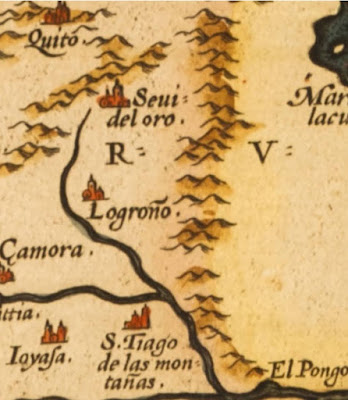 | Logroño de los Caballeros and Sevilla del Oro were two mining sites, lost to history. Documents reveal the two areas were rich in gold. Served by a declining slave labour force suffering from smallpox, the mines were abandoned by the Spanish invaders after 1606. |  |
  |  |  |
| In November 2019 Aurania Resources Ltd. (ARU.v) found the vestiges of an old road on it's Cutucu Project in southeastern Ecuador. The road was discovered by Aurania while searching for Sevilla de Oro. Records describe the Colonial Spanish operating the two gold mines between 1565 and 1606. The road discovered by Aurania is believed to be the one that linked Sevilla de Oro to Logroño de los Caballeros. The gold produced was cast into crude ingots for transport to Quito. The road was once a well-traveled route from the mines. It is an engineered road, cut into embankments and its down slope edges are lined with blocks of shale to prevent erosion. |
 See ----->Aurania Resources Ltd. - ARU.v See ----->Aurania Resources Ltd. - ARU.v | Two rectangular, well hewed blocks of dressed sandstone are estimated to weigh over 400kg each. The two gold mining areas at Sevilla de Oro and Logroño de los Caballeros were said to be a hard day's march apart. |  Between 1500 and 1650, the Spanish extracted 181 tons of gold and 16,000 tons of silver from the New World. Between 1500 and 1650, the Spanish extracted 181 tons of gold and 16,000 tons of silver from the New World. |

No comments:
Post a Comment